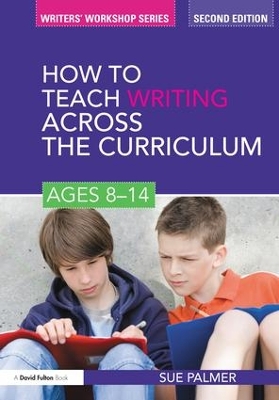Writers' Workshop
3 total works
Now in an updated second edition How to Teach Writing Across the Curriculum: Ages 6-8 provides a range of practical suggestions for teaching non-fiction writing skills and linking them to children's learning across the entire curriculum. Providing a number of suggestions for teachers and putting emphasis on creative approaches to teaching children writing in diverse and innovative ways, it provides:
- techniques for using speaking and listening, drama and games to prepare for writing
- suggestions for the use of cross-curricular learning as a basis for writing
- planning frameworks and `skeletons' to promote thinking skills
- information on key language features of non-fiction texts
- examples of non-fiction writing
- guidance on the process of creating writing from note-making.
With new hints and tips for teachers and suggestions for reflective practice, How to Teach Writing Across the Curriculum: Ages 6-8 will equip teachers with all the skills and materials needed to create enthusiastic non-fiction writers in their primary classroom.
Now in an updated second edition How to Teach Writing Across the Curriculum: Ages 8-14 provides a range of practical suggestions for teaching non-fiction writing skills and linking them to children’s learning across the curriculum. Emphasising creative approaches to teaching children’s writing in diverse and innovative ways, it provides:
- information on the organisation and language features of the six main non-fiction text types (recount, report, instruction, explanation, persuasion and discussion)
- suggestions for the use of cross-curricular learning as a basis for writing
- planning frameworks for children to promote thinking skills
- advice on developing children’s writing to help with organisational issues – paragraphing and layout, and the key language features
- examples of non-fiction writing
- suggestions for talk for learning and talk for writing (including links to 'Speaking Frames'; also published by Routledge)
- information on the transition from primary to secondary school.
With new hints and tips for teachers and suggestions for reflective practice as well as a wealth of photocopiable materials, How to Teach Writing Across the Curriculum: Ages 8-14 will equip teachers with all the skills needed to create enthusiastic non-fiction writers in their classroom.


